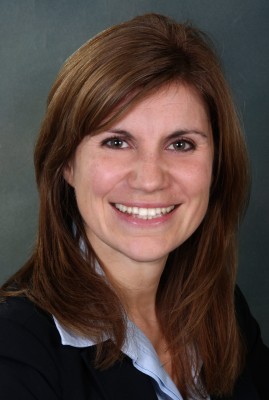You have an interesting background, both in academia and psychology. How does this impact your approach to your role at Planned Parenthood?
I bring an academic lens to the work I do, shedding light on the complexities of issues we address. As a strategist in the health care arena, I am able to identify market factors and systems that might otherwise be overlooked. I consider factors such as diversity in community values, social deterrents, and health challenges faced by marginalized communities. The question becomes, how do I use this lens to build relationships in these communities to better understand their issues? Also, how can Planned Parenthood address separate, complex issues in a way that benefits each community as a whole?
 What does the 2014 strategy look like for Planned Parenthood?
What does the 2014 strategy look like for Planned Parenthood?
We are advocating for a preventative approach to health care, one that is reflective of the evolving health care landscape at large. We’re able to do that effectively by listening and educating. Our strategy is focused on engaging the community by working to build a level of trust and rapport necessary to understand its concerns and, subsequently, address those concerns.
We know that Hispanics are less likely than other Americans to have a regular health care provider. What is the root of some of that ambivalence? And how is Planned Parenthood earning back community trust?
Not long ago, research was conducted in minority communities that was damaging and destroyed some trust between the communities and providers. Moreover, language barriers inhibited conversations between medical providers and patients. Too frequently, this resulted in inadequate and ineffective medical care. We are working to reverse those effects by allowing individuals to express their health care needs, rather than presuming to know what they are.
A useful approach to building trust in these communities is to offer health care professionals of diverse backgrounds. We strive to hire medical providers that come from within these communities. Planned Parenthood has championed community leaders to be health care advocates for their friends and neighbors. Patients are much more responsive and likely to internalize important health care messages when they are put forth by someone relatable.
Talk to me about how Planned Parenthood is using social media. How is it shaping health behaviors?
The use of social media can be very impactful in communities that have less access to medical information through traditional channels, such as regular preventative visits to a medical provider. It’s our responsibility to approach health care from the perspective of increasing access to information through multiple vehicles that will have the most impact. Social media platforms provide new channels to do just that.
How is Planned Parenthood advocating for the health of its communities?
As some might expect, we advocate for access to reproductive health services but also for causes broader in scope. For example, we learned that some women who touched receipts all day as part of their job were harmed by the chemical (Bisephenol A, BPA) on the paper. We partnered with environmental organizations to eliminate that chemical from the production of receipt paper.
What critical information does Planned Parenthood provide its patients?
Being mindful that access to health insurance is one of the most important aspects to resolving health disparities in the Latino community, we are educating patients about the Affordable Care Act (ACA) and facilitating enrollment into their state’s insurance marketplace. Planned Parenthood is also expanding the health services we provide to include primary care, so there’s an element of education about the more than 90 percent of preventative health services we provide—to men and women—that go far beyond contraceptive services.
What impact has the Affordable Care Act had on affordability of Planned Parenthood’s services for marginalized communities?
We’ve had so many people express deep gratitude that the ACA has allowed them to receive treatment for issues that may have been previously prohibitive. The preventative reproductive services offered at no charge, which the ACA guarantees, are certainly more accessible now to marginalized communities. Some contraceptive methodologies that were previously more expensive, but more effective, are now available free of charge.
What are some of the health concerns unique to Hispanics that Planned Parenthood can help prevent or treat?
Among Latinos we see a higher incidence of sexually transmitted disease and infection, as well as teenage pregnancy. From 1999 to 2009 we also saw that Hispanics reported fair-to-poor health at a higher rate than whites. These issues are alarming and require significant focus. Planned Parenthood is working with communities to make checkups, testing, and good health habits common practices. That emphasis addresses many issues before they begin.
Another industry transition we must be mindful of is the merging of hospitals and the expansion of health systems. Personal relationships can get lost in that environment, and Latinos are statistically more likely to fall through the cracks. The ACA may increase access, but the perception still remains that health care is a difficult-to-navigate bureaucracy. That perception of health care needs to look different in the Hispanic community.
Why is addressing health disparities in marginalized communities so important to you and, more broadly, so important to Planned Parenthood?
My mentality is: providing access to care and education has the power to transform not just our communities but the world. When you understand how to provide access across cultural divides, you see where the opportunity exists for strengthening society as a whole. Society is only as strong as its weakest member, so if we strengthen our communities—especially those most often overlooked—we become stronger. Providing access to care and education calls for investing in science, innovation, and creativity. It requires digging deep to improve society and Planned Parenthood is committed to making these investments and commitments.

